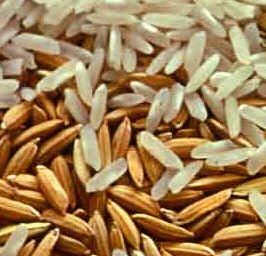Paddy rice price in Vietnam rises 10 per cent in a week
Hanoi -  Paddy rice prices in Vietnam have increased by almost 10 per cent over the past week, bringing joy to some farmers but adding to the government's concerns over inflation and food security for the poor, an official said Wednesday.
Paddy rice prices in Vietnam have increased by almost 10 per cent over the past week, bringing joy to some farmers but adding to the government's concerns over inflation and food security for the poor, an official said Wednesday.
The price of paddy rice in the Mekong Delta, the rice bowl of Vietnam, reached 5.3 million dong (330 dollars) per ton on Tuesday, compared with 4.8 million dong per ton a week earlier, according to Nguyen Thi Nguyet, chairwoman of the Vietnam Food Association.
The paddy rice price has risen by 45 per cent from 3.6 million dong (225 dollars) per ton at the beginning of this year.
"The rise in the paddy rice price is driven by rising world food prices, plus inflation in Vietnam," Nguyet said.
Nguyet said the rise in the domestic paddy price is good news for some rice growers, but it adds to the government's worries about inflation. Vietnam's consumer price index has risen 11 per cent so far this year.
"Some local farmers know about the rising world food prices, so they hold back their paddy rice sales to wait for the price to go up further," Nguyet said. "But poor farmers cannot do this, because they have to sell their paddy rice right after it is harvested in the fields, to get money for other needs."
Mekong Delta provinces have completed harvesting their winter-spring rice paddy crop, with a total yield of some 9.2 million tons. The country's total paddy rice output is expected to be 36 million tons this year, equivalent to that of last year, according to the Ministry of Agriculture.
Last month, Prime Minister Nguyen Tan Dung ordered local rice exporters to stop signing new rice export contracts until the end of June and to cap the total amount of rice to be exported in 2008 at 3.5 million tons, to ensure food security.
The UN's World Food Programme announced Tuesday that rising world food prices constituted a "silent tsunami" that could drive many of the world's poorest to the brink of starvation. Vietnam has cut its poverty rate from 50 per cent to under 20 per cent since the early 1990s, but one-quarter of Vietnamese children under age 5 were still malnourished as of 2005, according to government statistics.
A report by the UN's Food and Agriculture Organization in February found that due to increased trade and deregulation, governments were less able to cushion their populations against sudden rises in global food prices.
Vietnam, the second largest rice exporter in the world, exported 859,000 tons of rice in the first quarter of this year, up 5.3 per cent from the same period last year, according to government statistics. (dpa)